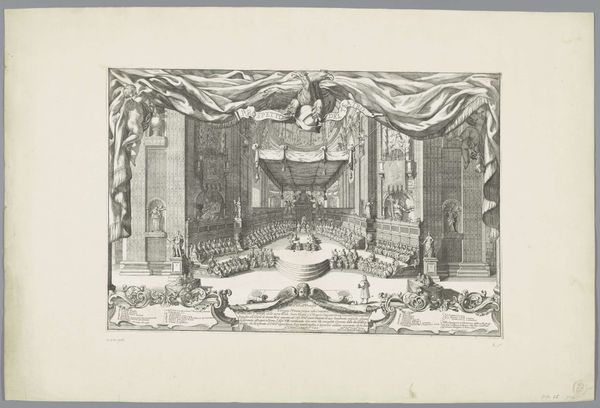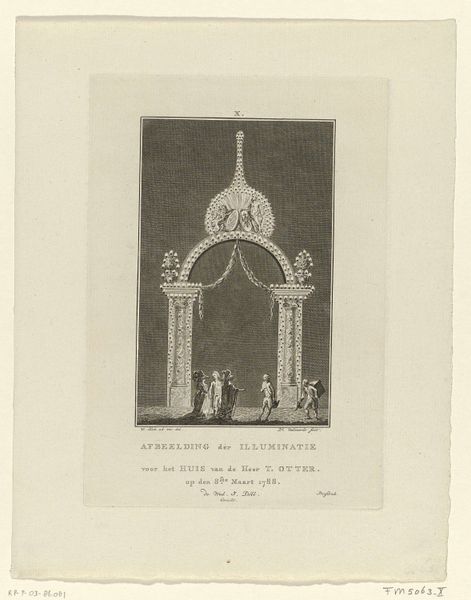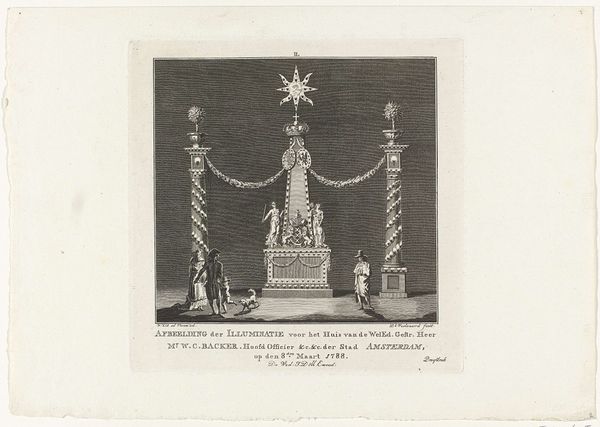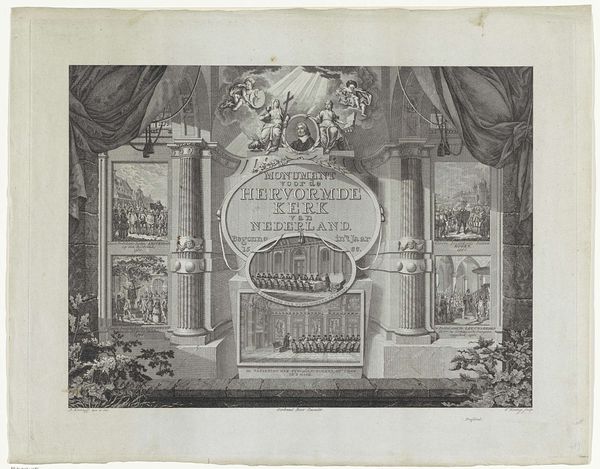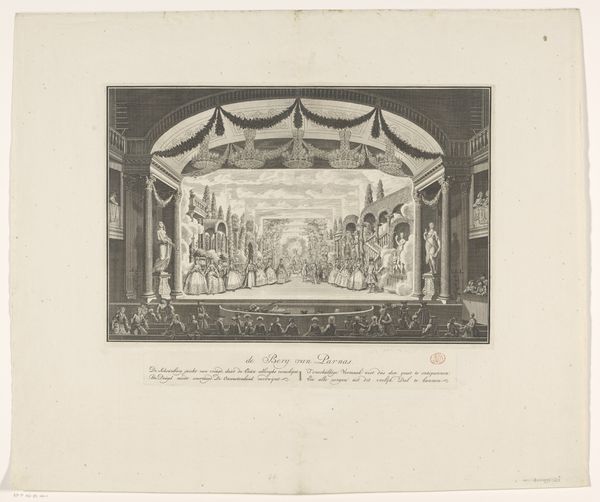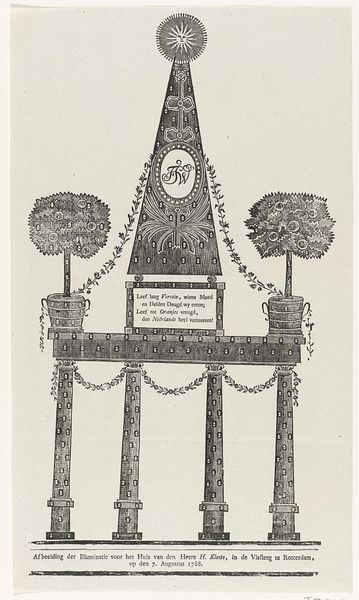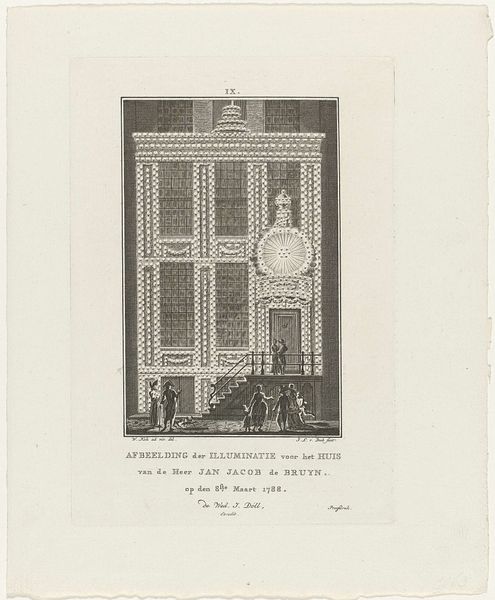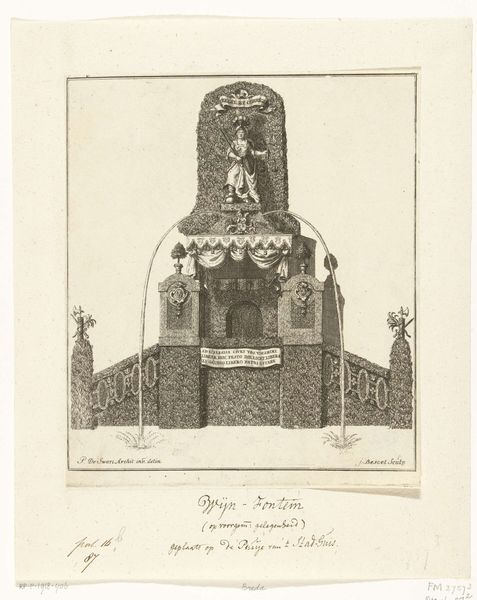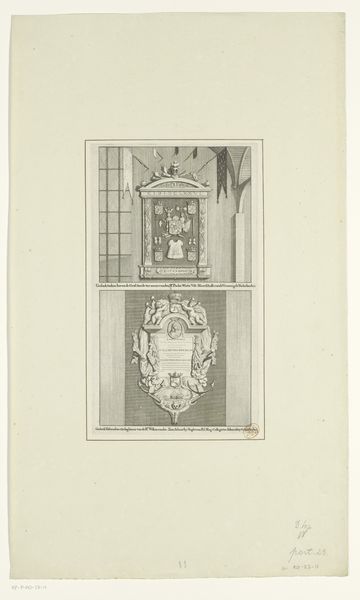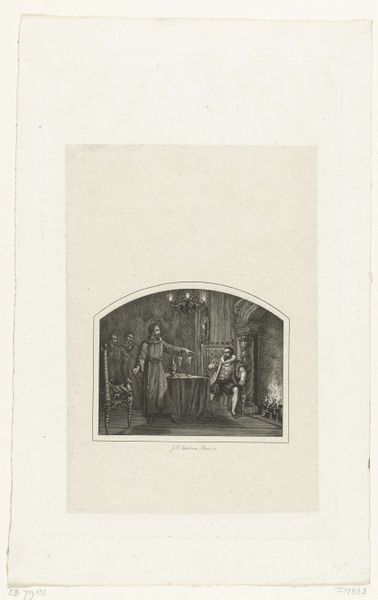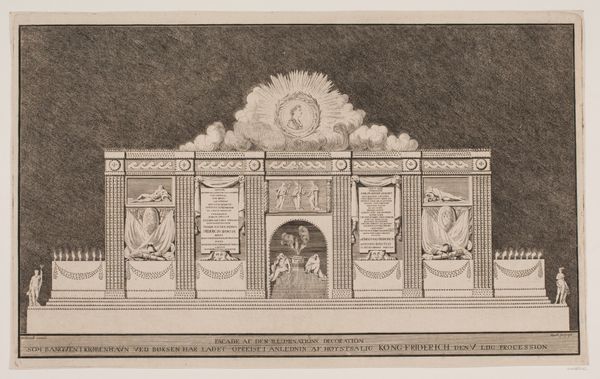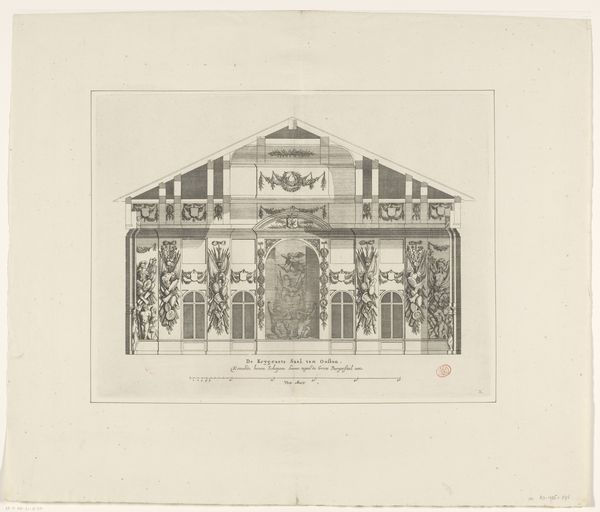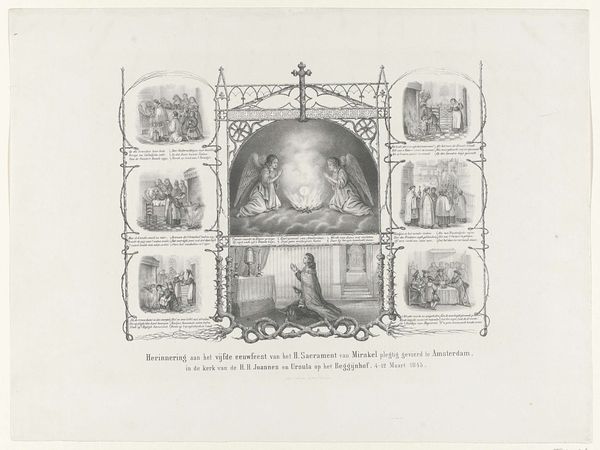
Illuminatie voor het huis van J.L. Gregory te Amsterdam, 1788 1788
0:00
0:00
Dimensions: height 230 mm, width 256 mm
Copyright: Rijks Museum: Open Domain
Editor: This is "Illuminatie voor het huis van J.L. Gregory te Amsterdam, 1788," a print by Jan Lucas van der Beek here at the Rijksmuseum. It looks like an engraving of a house facade lit up for a celebration. The detail is incredible for a print. What strikes you when you look at it? Curator: Immediately, the context of production comes to mind. Consider the labor involved in creating such a detailed engraving. Each line etched, each dot meticulously placed. The materials too - the copper plate, the paper, the ink. These choices weren't arbitrary. Engravings served as a means of mass communication, allowing imagery and information to disseminate quickly in an era before photography. Editor: That’s a great point! So, you're saying that choosing printmaking influenced how the message spread about the subject? Curator: Exactly! The artist didn’t paint an original that only one person could see; the aim was broad dissemination of the wealth of this person through distribution of their image in society. Think about who the consumers of this print were, who could afford to buy it, and what it symbolized in their hands. A way of aligning themselves with this man and the event depicted. Editor: And the event? What's being celebrated? Curator: I imagine the choice of illumination relates directly to status. Think about the process to create that degree of light – candles? Oil lamps? – all reflecting access to materials. Furthermore, the illuminated facade itself becomes a spectacle of consumption, an act of conspicuous display meant to impress and inspire awe. Editor: It’s a temporary installation memorialized through reproducible media, right? Curator: Precisely! The ephemerality of light contrasted against the lasting potential of print underscores the social dimensions embedded within the artwork itself. It makes me consider what traces of celebrations like these are recorded now and for whom. Editor: That's a fascinating perspective. It really makes me think differently about how art is both a reflection of society and actively participates in shaping it. Curator: Absolutely. By focusing on the materiality and methods of production, we gain a deeper appreciation of art's role within historical and cultural contexts.
Comments
No comments
Be the first to comment and join the conversation on the ultimate creative platform.
